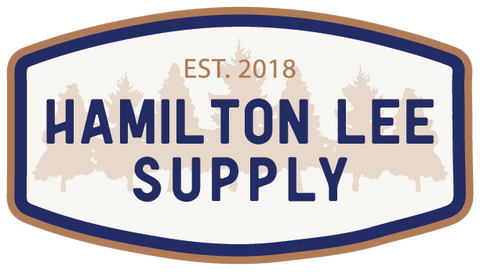How is CA Glue Used in Slab Woodworking?
Live edge slab woodworking has grown in popularity over the years, with many woodworkers and DIY enthusiasts embracing the natural beauty and uniqueness of live edge slabs in their projects. One challenge that comes with using live edge slabs is filling gaps and cracks in the wood. This is where CA glue comes in as a popular gap filler among woodworkers due to its fast-drying and strong bonding properties.However, to achieve optimal bonding strength and prevent issues such as foaming or blooming, the use of accelerators and activators is crucial. These substances aid in speeding up the curing process and improving the bonding properties of the CA glue.
In this blog post, we will explore the use of CA glue as a gap filler, and the importance of accelerators and activators in achieving strong and durable bonds. We will also answer some common questions related to the use of CA glue and provide tips for using it effectively in woodworking projects.
What are CA Glue Accelerators?
To achieve the strongest bonds and prevent any potential issues, the use of accelerators is crucial. CA glue accelerators are substances that are designed to speed up the curing process of CA glue, allowing for a stronger bond in a shorter amount of time.There are various types of accelerators available in the market,, each with its own unique properties and advantages. Aerosol sprays are a common type of accelerator, and are typically used for larger areas. For smaller areas, brush-on liquids and can be applied for greater control.
The ingredients found in CA glue accelerators can vary, but some common ones include hydroxyethyl cellulose and acrylic acid. These substances help to enhance the bonding properties of the CA glue and improve performance..
When using CA glue accelerators in a woodshop, it's important to take safety precautions. This includes gloves, eyewear, as well as ensuring proper ventilation..
What are CA glue activators?
Activators help to speed up the bonding process and ensure that the glue dries and sets quickly. Unlike accelerators, which are designed to speed up the curing time of the glue, CA glue activators are formulated to help the glue adhere to surfaces more effectively. There are several types of CA glue activators available in the market, each with its unique properties and strengths. Some activators are designed to work with specific types of CA glues, while others are formulated to work with a broader range.Common ingredients in activators include:
- Amine-based Compounds: Which help to neutralize the acidic nature of the glue
- Alkyl Dimethylbenzyl Ammonium Chloride: Which acts as a surfactant to improve bonding.
While these activators can be highly effective, it is crucial to follow the manufacturer's instructions and safety guidelines to avoid any potential hazards when working with them. Again, proper ventilation, protective gear, and caution when handling are crucial when working with super glues.
How do you use CA Glue Activators/Accelerators in wood slab projects?
Live-edge slab projects often involve filling gaps with CA glue accelerators and activators to ensure a strong and reliable bond. To properly apply these products:
- Clean the surfaces and ensure that they are free from dust, dirt, and debris.
- Apply to the surfaces using a brush, syringe, or spray bottle— depending on the size and location of the gap
- Sand after following the manufacturer's instructions about allowing sufficient time for the glue to cure first.
To ensure a successful application of accelerators and activators, there are several tips and tricks to keep in mind:
- One important consideration is the humidity and temperature of the working environment. High humidity or temperature fluctuations can impact the curing time and affect the strength of the bond.
- Additionally, it is essential to use the appropriate accelerator or activator for the specific type of wood and gap size. Activators may be better suited for softer woods or small gaps, while accelerators may be more effective for harder woods or larger gaps.
Should you use an CA Accelerator or Activator on your next slab?
When choosing between CA glue accelerators and activators for live edge slab woodworking projects, it is important to consider the similarities and differences between these products.While both are designed to speed up the curing process, accelerators are typically composed of dimethyl-p-toluidine and are more effective for harder woods and larger gaps. Activators, on the other hand, contain compounds such as polyamines or tertiary amines and are better suited for softer woods and smaller gaps. Ultimately, the choice of accelerator or activator will depend on the specific requirements of the project and the type of wood being used.



